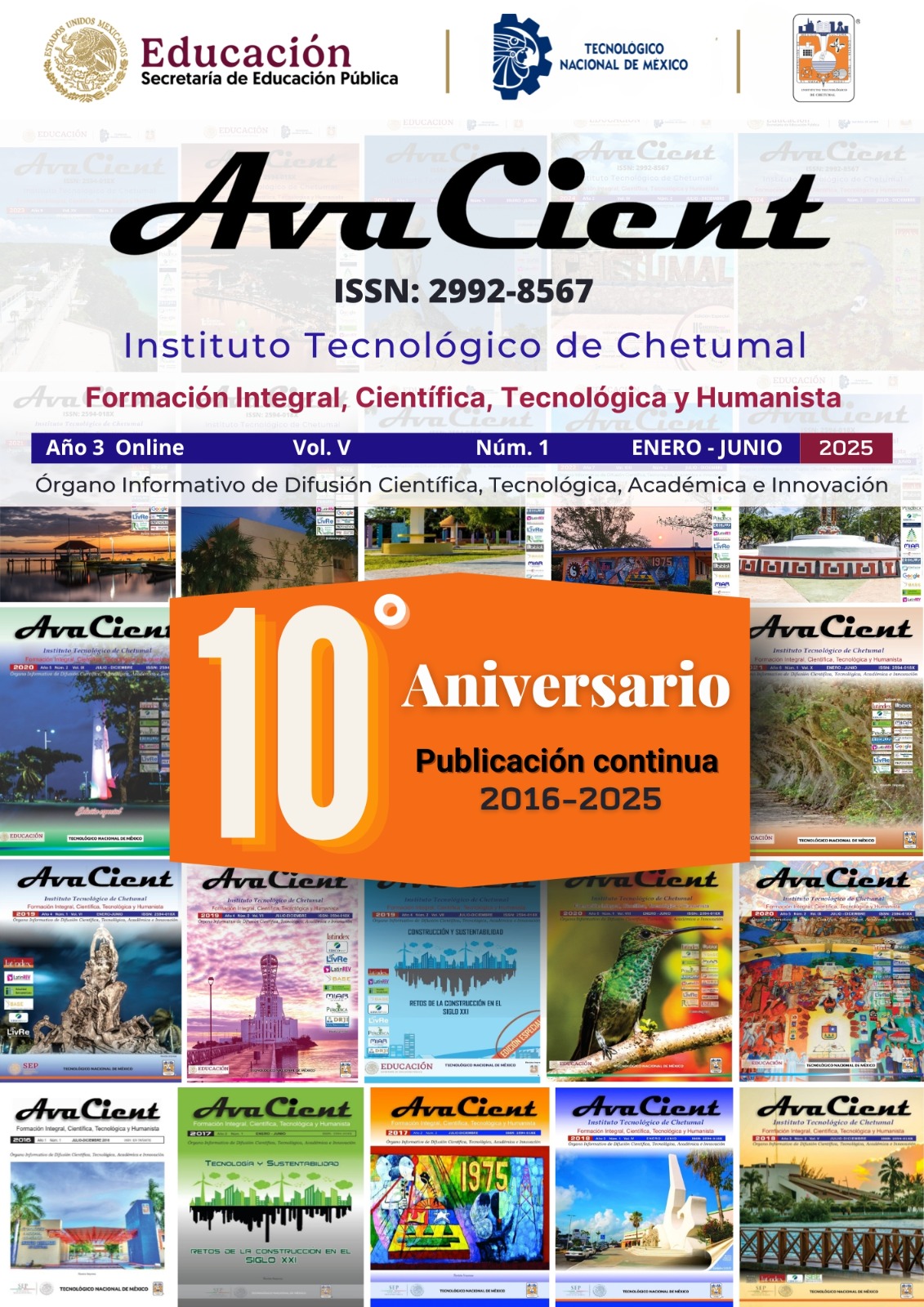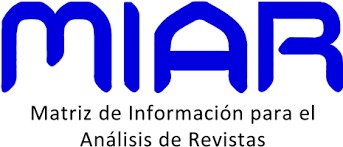ASSESSMENT OF THE GENETIC DIVERSITY OF CICHLIDS IN THE YUCATAN PENINSULA THROUGH BARCODES
DOI:
https://doi.org/10.69823/avacient.v5n1a2Keywords:
Gen, Biodiversity, Endangered speciesAbstract
The Yucatan Peninsula, located in southeastern Mexico, is a karstic region with several types of water bodies with different degrees of isolation, which can influence the differentiation (morphological and genetic) of the organisms that inhabit them. In these environments, the Cichlidae family is one of the most diverse in number of genera and species, therefore is of interest to study their diversification processes at different levels. In this work, the genetic diversity of some of these species was evaluated, based on the analysis of public sequences of the MT-CO1 gene deposited in the BOLD repository. Three species are the most genetically diverse (Mayaheros urophthalmus, Thorichthys helleri and T. meeki) and two species haplogroups were identified that can be explained, in part, by trophic affinities. The presence of the exotic species Parachromis managuensis was detected and the range of Vieja fenestrata was extended. These findings contribute to the knowledge of fish diversity in the region, so the use and analysis of genetic barcodes should be considered as part of the tools for measuring ichthyodiversity, particularly in environments that favor the isolation of aquatic populations.
Downloads
References
Ali, F. S., Ismail, M., y Aly, W. (2020). DNA barcoding to characterize biodiversity of freshwater fishes of Egypt. Molecular Biology Reports, 47(8), 5865–5877. https://doi.org/10.1007/s11033-020-05657-3
Bandelt, H. J., Forster, P., y Rohl, A. (1999). Median-joining networks for inferring intraspecific phylogenies. Molecular Biology and Evolution, 16(1), 37–48. https://doi.org/10.1093/oxfordjournals.molbev.a026036
Barrientos-Medina, R. C. (2004). Diversidad de mojarras (Teleostei: Cichlidae) en el suroeste de Campeche, México. En M. L. Lozano-Vilano y A. J. Contreras-Balderas (Ed.), Homenaje al Dr. Andrés Reséndez Medina, un ictiólogo mexicano. (pp. 235–249). Universidad Autónoma de Nuevo León.
Barrientos-Villalobos, J., Schmitter-Soto, J. J., & de los Monteros, A. J. E. (2018). Several subspecies or phenotypic plasticity? A geometric morphometric and molecular analysis of variability of the Mayan cichlid Mayaheros urophthalmusin the Yucatan. Copeia, 106(2), 268–278. https://doi.org/10.1643/ci-17-657
Chumba-Segura y Roberto Carlos Barrientos-Medina., L. (2010). Peces dulceacuícolas. En R. Durán y M. Méndez. (Ed.), Biodiversidad y Desarrollo Humano en Yucatán. (pp. 253–254). CICY, PPD-FMAM, CONABIO, SEDUMA.
Elías-Gutiérrez, M., Hubert, N., Collins, R. A., y Andrade-Sossa, C. (2021). Aquatic organisms research with DNA barcodes. Diversity, 13(7), 306. https://doi.org/10.3390/d13070306
Gaytán, Á., Bergsten, J., Canelo, T., Pérez-Izquierdo, C., Santoro, M., & Bonal, R. (2020). DNA Barcoding and geographical scale effect: The problems of undersampling genetic diversity hotspots. Ecology and Evolution, 10(19), 10754–10772. https://doi.org/10.1002/ece3.6733
Hebert, P. D. N., Ratnasingham, S., y de Waard, J. R. (2003). Barcoding animal life: cytochrome c oxidase subunit 1 divergences among closely related species. Proceedings. Biological Sciences, 270(suppl_1). https://doi.org/10.1098/rsbl.2003.0025
Hubbs, C. L. (1936). Fishes of the Yucatan Peninsula. Carniege Institution of Washington Publication, 457, 157-287.
Hubert, N., Pepey, E., Mortillaro, J.-M., Steinke, D., Andria-Mananjara, D. E., y de Verdal, H. (2021). Mitochondrial Genetic Diversity among Farmed Stocks of Oreochromis spp. (Perciformes, Cichlidae) in Madagascar. Diversity, 13(7), 281. https://doi.org/10.3390/d13070281
Kimura, M. (1980). A simple method for estimating evolutionary rates of base substitutions through comparative studies of nucleotide sequences. Journal of Molecular Evolution, 16(2), 111–120. https://doi.org/10.1007/bf01731581
Koblmüller, S., Albertson, R. C., Genner, M. J., Sefc, K. M., y Takahashi, T. (2019). Preface: advances in cichlid research III: behavior, ecology, and evolutionary biology. Hydrobiologia, 832(1), 1–8. https://doi.org/10.1007/s10750-019-3903-1
Konings, A. (1989). Cichlids from Central America. TFH Publications.
Kumar, S., Stecher, G., Li, M., Knyaz, C., y Tamura, K. (2018). MEGA X: Molecular evolutionary genetics analysis across computing platforms. Molecular Biology and Evolution, 35(6), 1547–1549. https://doi.org/10.1093/molbev/msy096
Leigh, J. W., & Bryant, D. (2015). Popart: Full‐feature software for haplotype network construction. Methods in Ecology and Evolution, 6(9), 1110–1116. https://doi.org/10.1111/2041-210x.12410
Miller, R. R., Mincley, W. L., y Norris, S. M. (2009). Peces dulceacuícolas de México. CONABIO–SIMAC–ECOSUR–DFC.
Mojekwu, T. O., Cunningham, M. J., Bills, R. I., Pretorius, P. C., & Hoareau, T. B. (2021). Utility of DNA barcoding in native Oreochromis species. Journal of Fish Biology, 98(2), 498–506. https://doi.org/10.1111/jfb.14594
Morgenstern, R. (2018). Fishes collected by Emanuel Ritter von Friedrichsthal in Central America between 1838 -1841. Vertebrate zoology, 68(3), 253–267. https://doi.org/10.3897/vz.68.e31614
Nascimento, B. M., de Paula, T. S., & Brito, P. M. M. (2022). DNA barcode of Tilapia fish fillet from the Brazilian market and a standardized Coi haplotyping for molecular identification of Oreochromis spp. (Actinopterygii, Cichlidae). SSRN Electronic Journal. https://doi.org/10.2139/ssrn.4002237
Ratnasingham, S., & Hebert, P. D. N. (2007). bold: The Barcode of Life Data System (http://www.barcodinglife.org). Molecular Ecology Notes, 7(3), 355–364. https://doi.org/10.1111/j.1471- 8286.2007.01678.x
Ratnasingham, S., & Hebert, P. D. N. (2013). A DNA-based registry for all animal species: The barcode index number (BIN) system. PloS One, 8(7), e66213. https://doi.org/10.1371/journal.pone.0066213
Razo-Mendivil, U., Vázquez-Domínguez, E., & de León, G. P.-P. (2013). Discordant genetic diversity and geographic patterns betweenCrassicutis cichlasomae(Digenea: Apocreadiidae) and its cichlid host, “Cichlasoma”urophthalmus(osteichthyes: Cichlidae), in middle-America. The Journal of Parasitology, 99(6), 978–988. https://doi.org/10.1645/13-225.1
Ribolli, J., Zaniboni Filho, E., Scaranto, B. M. S., Shibatta, O. A., & Machado, C. B. (2021). Cryptic diversity and diversification processes in three cis-Andean Rhamdia species (Siluriformes: Heptapteridae) revealed by DNA barcoding. Genetics and molecular biology, 44(3). https://doi.org/10.1590/1678-4685-gmb-2020-0470
Říčan, O., Piálek, L., Dragová, K., & Novák, J. (2016). Diversity and evolution of the Middle American cichlid fishes (Teleostei: Cichlidae) with revised classification. Vertebrate zoology, 66(1), 1–102. https://doi.org/10.3897/vz.66.e31534
Rozas, J., Ferrer-Mata, A., Sánchez-DelBarrio, J. C., Guirao-Rico, S., Librado, P., Ramos-Onsins, S. E., & SánchezGracia, A. (2017). DnaSP 6: DNA sequence polymorphism analysis of large data sets. Molecular Biology and Evolution, 34(12), 3299–3302. https://doi.org/10.1093/molbev/msx248
Santos, M. E., Lopes, J. F., & Kratochwil, C. F. (2023). East African cichlid fishes. EvoDevo, 14(1). https://doi.org/10.1186/s13227-022-00205-5
Schmitter-Soto, J. J. (1998). Catálogo de los peces continentales de Quintana Roo. El Colegio de la Frontera Sur.
Schmitter-Soto, J. J., Vega-Cendejas, M. E., y Torres-Castro, I. L. (2010). Peces de agua dulce. En G. J. VillalobosZapata & J. Mendoza-Vega (Eds.), La biodiversidad en Campeche: estudio de estado (pp. 316-321). CONABIO– Gobierno del Estado de Campeche–Universidad Autónoma de Campeche-ECOSUR.
Svardal, H., Salzburger, W., & Malinsky, M. (2021). Genetic variation and hybridization in evolutionary radiations of cichlid fishes. Annual Review of Animal Biosciences, 9(1), 55–79. https://doi.org/10.1146/annurev-animal-061220-023129
Toral-Almazán y A. Reséndez-Medina., S. (1974). Los cíclidos (Pisces: Perciformes) de la Laguna de Términos y sus afluentes. Revista de Biología Tropical, 21(2), 259–279.
Valdez-Moreno, M., Ivanova, N. V., Elías-Gutiérrez, M., Contreras-Balderas, S., & Hebert, P. D. N. (2009). Probing diversity in freshwater fishes from Mexico and Guatemala with DNA barcodes. Journal of Fish Biology, 74(2), 377–402. https://doi.org/10.1111/j.1095-8649.2008.02077.x
Valdez-Moreno, Martha, Vásquez-Yeomans, L., Elías-Gutiérrez, M., Ivanova, N. V., & Hebert, P. D. N. (2010). Using DNA barcodes to connect adults and early life stages of marine fishes from the Yucatan Peninsula, Mexico: potential in fisheries management. Marine & Freshwater Research, 61(6), 655. https://doi.org/10.1071/mf09222
Valdez-Moreno, Martha, Ivanova, N. V., Elías-Gutiérrez, M., Pedersen, S. L., Bessonov, K., & Hebert, P. D. N. (2019). Using eDNA to biomonitor the fish community in a tropical oligotrophic lake. PloS One, 14(4), e0215505. https://doi.org/10.1371/journal.pone.0215505
Vences, M., Stützer, D., Rasoamampionona Raminosoa, N., & Ziegler, T. (2022). Towards a DNA barcode library for Madagascar’s threatened ichthyofauna. PloS One, 17(8), e0271400. https://doi.org/10.1371/journal.pone.0271400
Ximenes, A. M., Bittencourt, P. S., Machado, V. N., Hrbek, T., & Farias, I. P. (2021). Mapping the hidden diversity of the Geophagus sensu stricto species group (Cichlidae: Geophagini) from the Amazon basin. PeerJ, 9(e12443), e12443. https://doi.org/10.7717/peerj.12443
Downloads
Published
How to Cite
Issue
Section
License
Copyright (c) 2025 AvaCient

This work is licensed under a Creative Commons Attribution-NonCommercial 4.0 International License.












